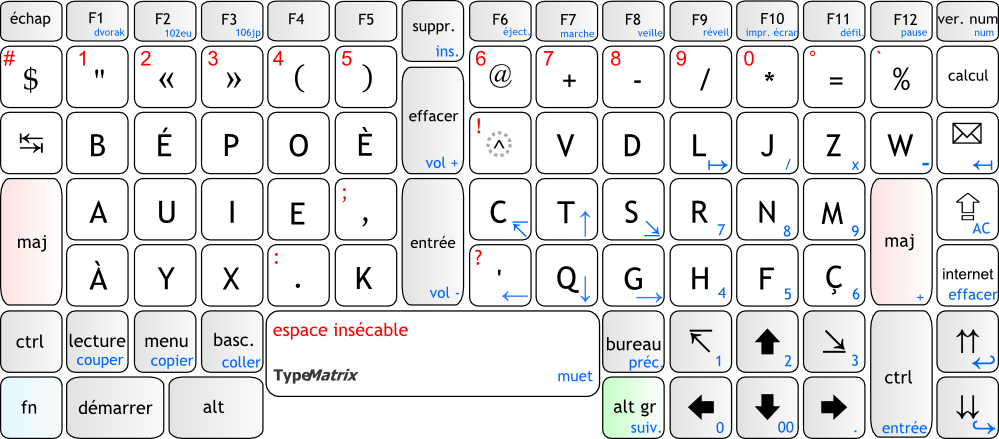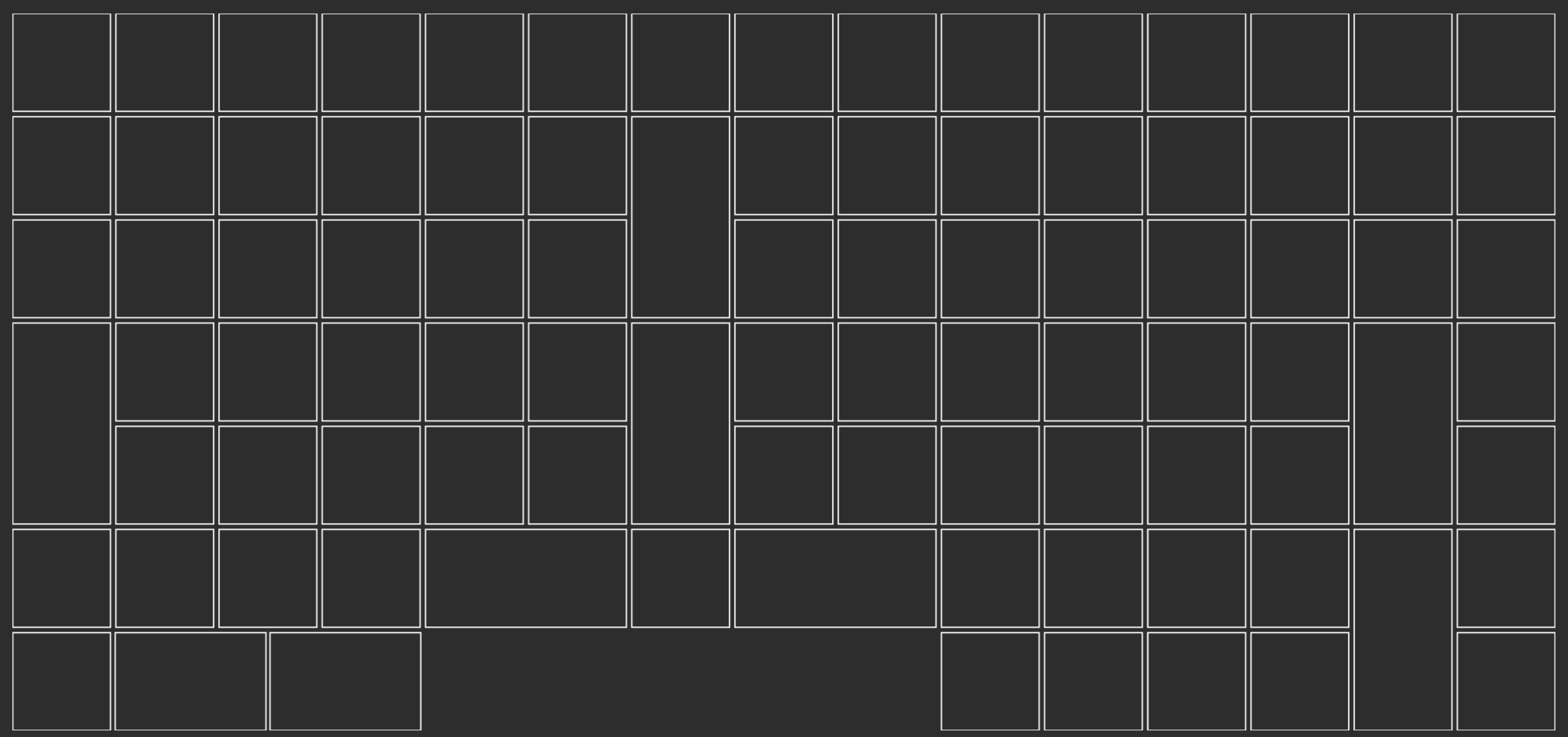Just looking at the TypeMatrix for the first time. Looks like a pretty interesting layout. Manufacturing a mechanical TM(TypeMatrix) clone is likely going to be pretty difficult, but becomes more possible the more you diverge from the design.
At a high level though, the main issues I see at first glance is that TM is using laptop switches, custom legends, and 1/2 size function row keys.
The only analogue to laptop switches in the mechanical keyboard world is Kalih X switches, but they're hard to come by and a bit more difficult to design for, but they just might work with the TM keycaps, but don't quote me on that.
Choc switches are possible, but you're not going to get legends (the letters and symbols on the keycaps) unless you have them custom made, which is next to impossible if using traditional methods. Same story with full size MX switches. You might be able to fill out the alpha-numerics, but the secondary legends in blue aren't going to be there, not to mention the vertical shift, back space, enter, and control.
As for the 1/2 size function row, you'll have to compromise and go with full 1u keys because there aren't any switches out there that will fit in a 0.5u size, not to mention lack of keycaps. And speaking of odd-sized keycaps, you might run into issues with Choc keycaps for the spacebar in particular, as I don't think anyone manufactures a 5u spacebar in choc form factor, and the 2u shift, enter, and control keys will need choc stabilizers, which are pretty hard to find IIRC.
So, with that all said, these are the compromises you're probably going to have to make to get a completed keyboard:
- MX (tall) switches, maybe-possibly choc depending on stabilizer availability and design compromise for spacebar
- Legendless modifier keys and no secondary legends on alpha-numerics
- Likely a flat keycap profile (a.k.a no OEM, SA, or Cherry profile keycaps)
- 1u function row instead of 0.5u
There's a few routes you can go down to get his done.
-
Pay someone else to do it.
-
Learn how to do it yourself.
If you take route 1, it's going to be much more costly than route 2 most likely, but far less time and effort invested to get a working product. I'm sure there are plenty of people who have designed their own PCB/Keyboard that would be willing to design yours for the right price.
If you take route 2 then you're going to be putting a lot of time into learning different software packages, how a keyboard works at the circuit level, and how to solder at the very least; but you'll have done all the work yourself, which is pretty gratifying IMO.
A good place to start learning is "ergogen". It's like a configuration language and accompanying software for designing keyboards programmatically. It's not especially complicated and has plenty of resources on YouTube and in written form. There are online viewers that make it easy to visualize the layout you're configuring, and other projects on Github that can take ergogen output files and convert those to pcb design files that are ready to send off to manufacturing, 3d printed case files, and and interactive BOM (bill of materials) that can help you when it comes time to solder the switches, controller, diodes, etc.

